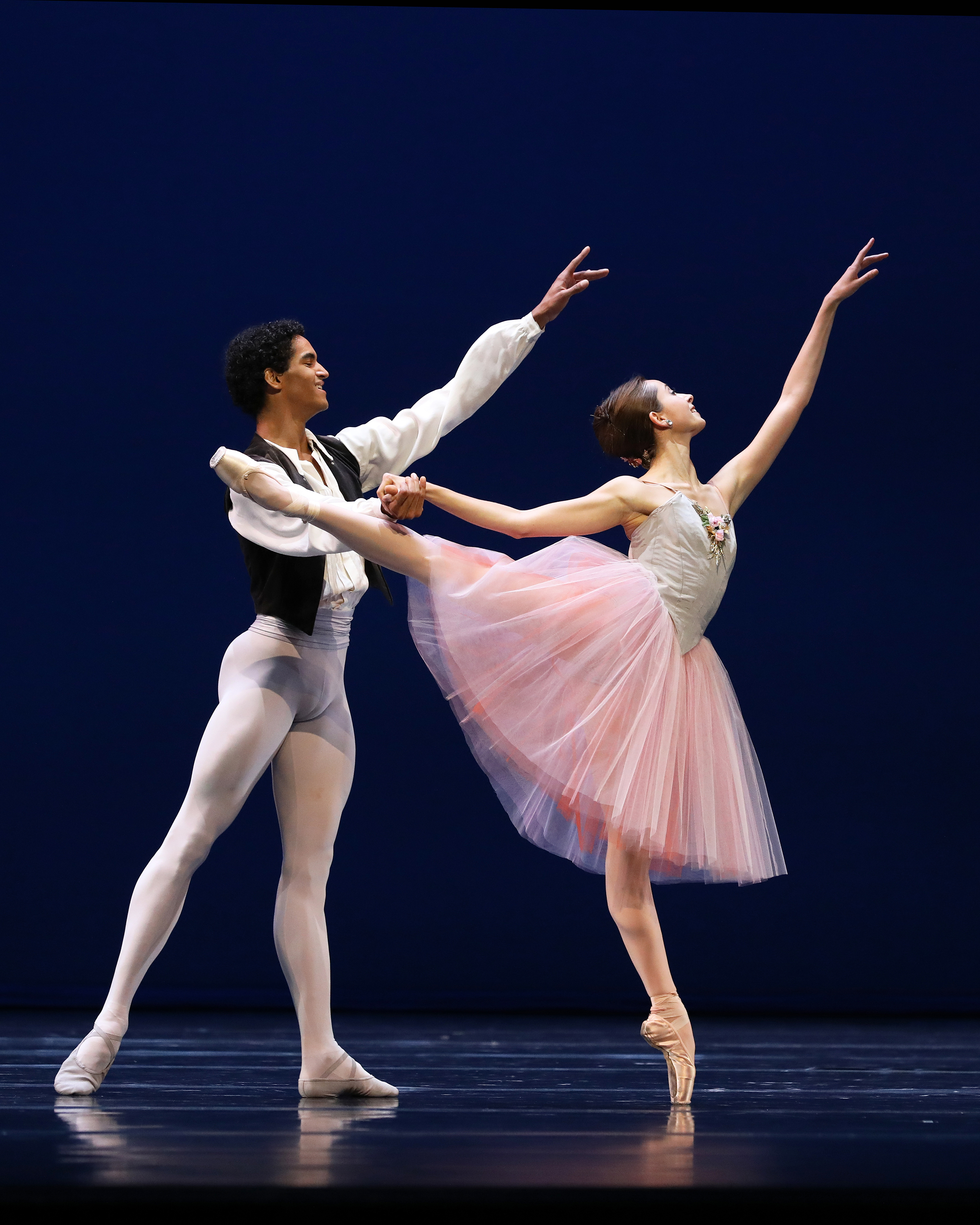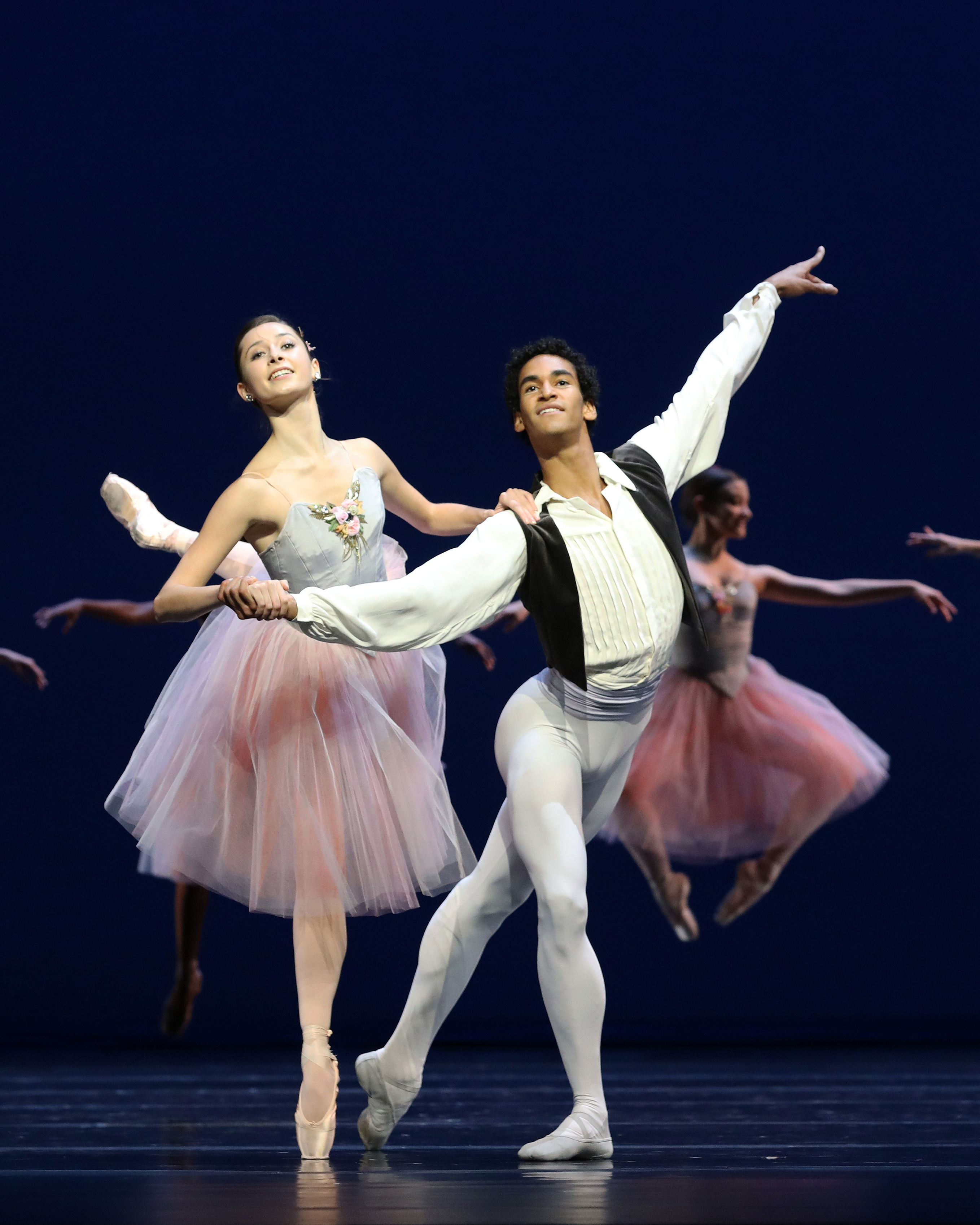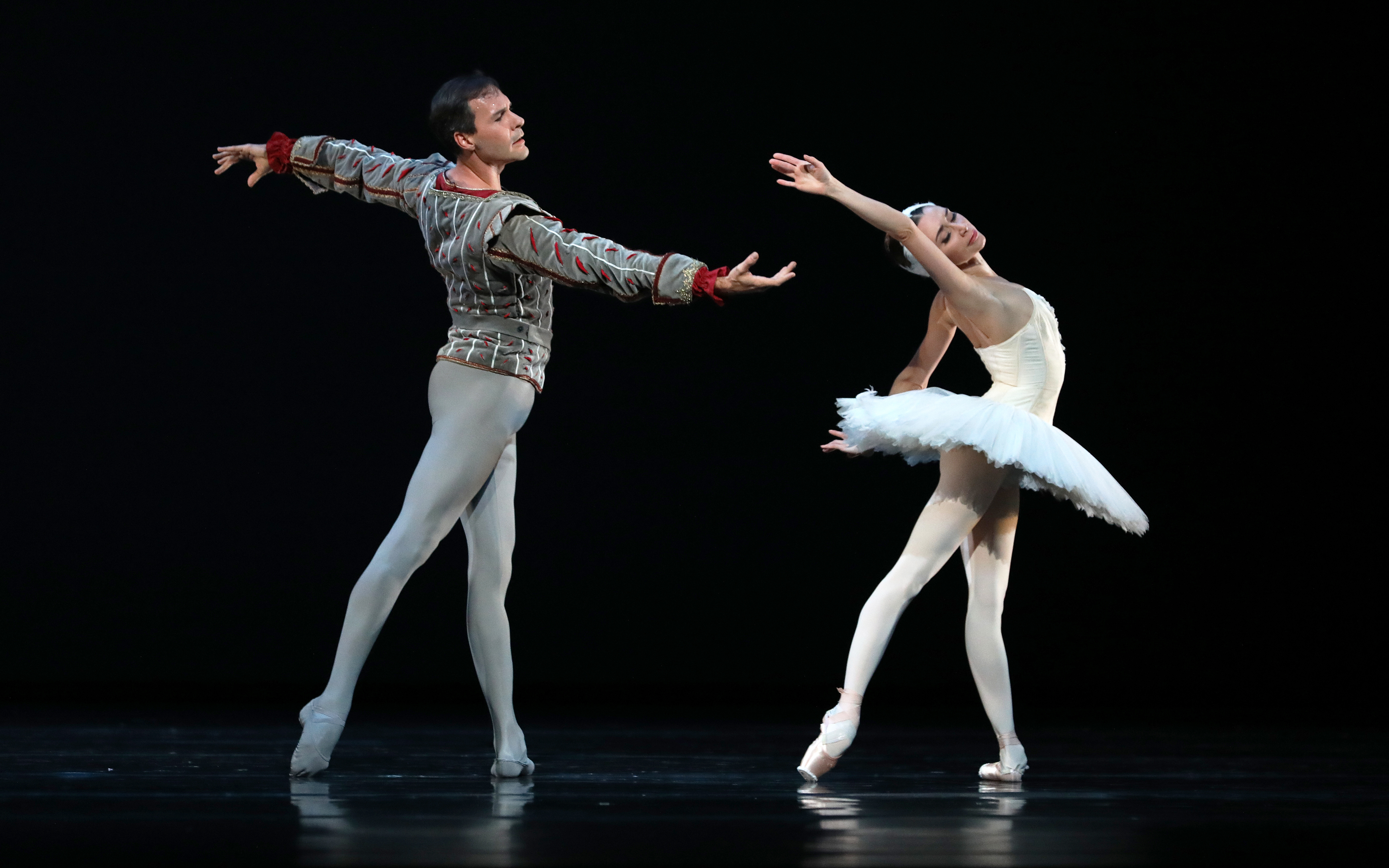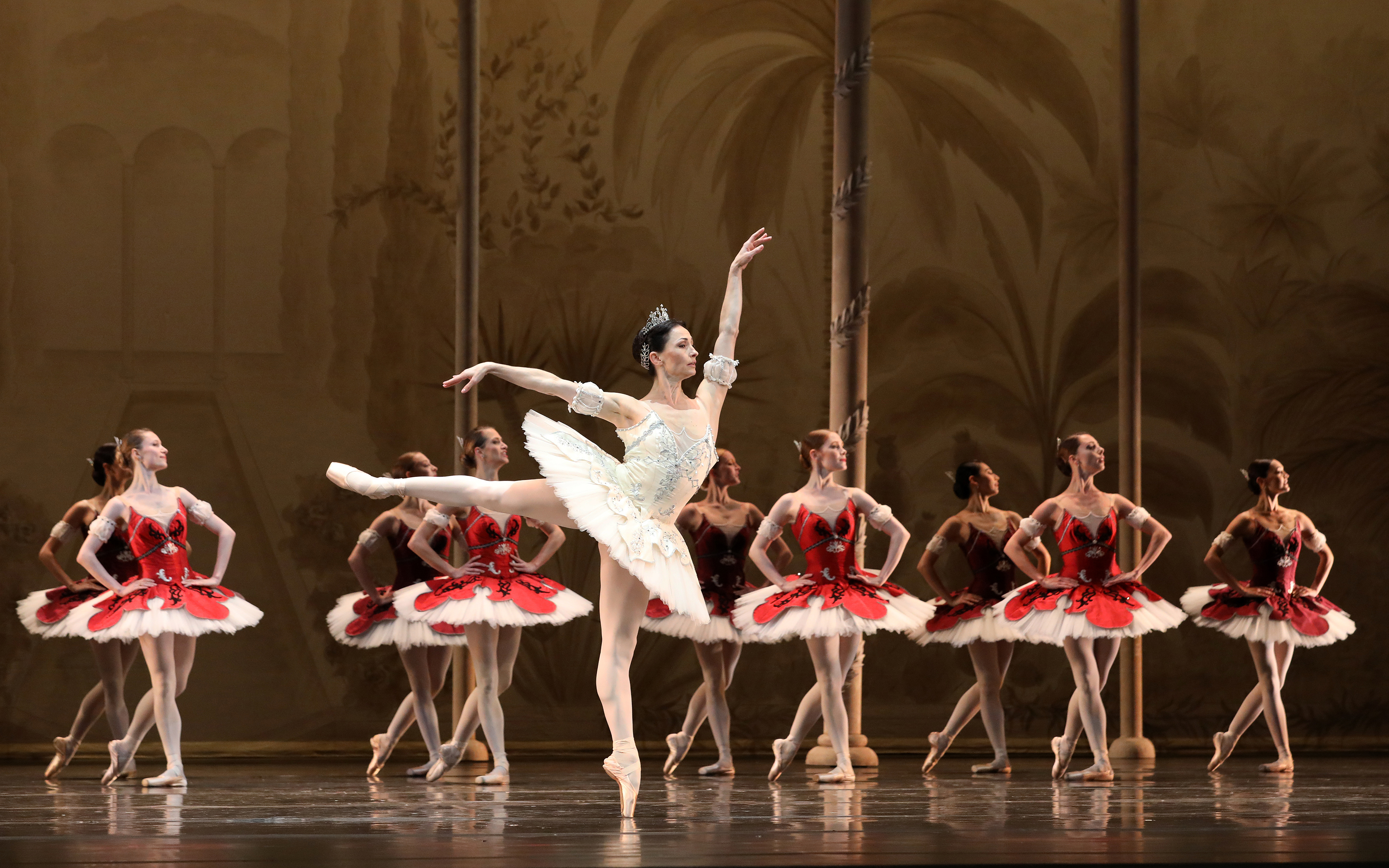Dutch National Ballet
Back to Ballet - classic
Dates
13 october - 11 november 2020
Location
Dutch National Opera & Ballet, Great hall
Running time
1:30 hours, 0 breaks
Tickets
n.a.

Classic
Back to Ballet – classic brengt u in deze roerige tijd terug naar de kern van het klassieke ballet waarin de dansers de vaste grond onder hun voeten hervinden. Onze solisten schitteren weer in hartveroverende hoofdrollen van tijdloze balletten als Le Corsaire, Het Zwanenmeer en Paquita én in een nieuw klassiek werk van artistiek directeur en choreograaf Ted Brandsen.
Valse Fantaisie
Valse Fantaisie by George Balanchine, a virtuoso ballet full of jumps, pointe work and 'pas de chats', was originally presented as the second part of Glinkiana (1967), choreographed after four different compositions by Mikhail Glinka. The music, reminiscent of the waltzes of Frederic Chopin, is fast and light, and was nicknamed 'the melancholic waltz'. The female dancers move together around a single male dancer in a whirl of perpetual motion. It is pure dance, full of dynamics and rhythm.
Choreography George Balanchine © The George Balanchine Trust
Music Mikhail Glinka ('Valse Fantaisie in B minor')
Costumes Oliver Haller
Lighting Wijnand van der Horst


Swan Lake
Pas de Deux from the 2nd Act
Swan Lake (1895) is one of the masterpieces of nineteenth-century Russian imperial ballet. Composer Pyotr Ilyich Tchaikovsky and choreographer Marius Petipa managed to bring both music and dance to the highest level. The pas de deux that Odette dances in the second act with prince Siegfried is considered a miracle of lyricism and poetry in the art of dance.
Choreography Rudi van Dantzig, after Marius Petipa and Lev Ivanov
Music Pyotr Ilyich Tchaikovsky
Set and costumes Toer van Schayk
Lighting Jan Hofstra

Classical Symphony
Choreographer and director of Dutch National Ballet Ted Brandsen created Classical Symphony for the male dancers in the company. With this choreography, he provides us with his own interpretation of the theme ‘Back to Ballet’. For the occasion of the company’s annual Gala in 2014, Ted Brandsen created Vivace, set to the music of the final part of Sergei Prokofiev's Classical Symphony. He now expands his creation for this programme.The male dancers move athletically and masterly to the music of Prokofjev.
Choreography Ted Brandsen
Music Sergei Prokofjev, Symphony nr. 1 in D major, Larghetto, Gavotte, Finale
Le Corsaire
Pas de deux
The spectacular pas de deux from Le Corsaire was created in the late 19th century, and could be interpreted as an ode to the virtuosity of classical ballet. Its technical and expressive requirements have rendered it a favouvrite among soloists. In recent years, Dutch National Ballet's principals Maia Makhateli and Young Gyu Choi have made an international name for themselves with this pas de deux.
Choreography Samuil Andrianov, Agrippina Vaganova, Vakhtang Chabukiani
Music Riccardo Drigo, Ludwig Minkus & Boris Fitinhof-Schell, orchestration by W. McDermott, adjusted by J. Williams
Lighting Bert Dalhuysen
Paquita
With majestic elegance, a star couple and various soloists shine amidst the dancers of the corps de ballet. There will also be children dancing in the performance. In her version of Marius Petipa's Paquita, associate artistic director Rachel Beaujean shines a fresh light on the pure dance divertissement from the narrative 19th-century ballet. Beaujean gives this ballet classic the schwung that suits our times.
Choreography Rachel Beaujean, after Marius Petipa
Music Ludwig Minkus, Edouard Delvedez, Adolphe Adam, Riccardo Drigo, Nikolai Tscherepnin, Gustavovich Gerber, arr. John Lanchbery & David Coleman, adjusted by J. Williams
Sets and costumes François-Noël Cherpin
Lighting Hans-Åke Sjöquist
